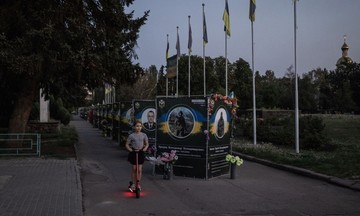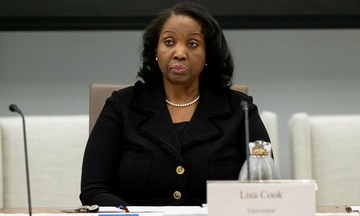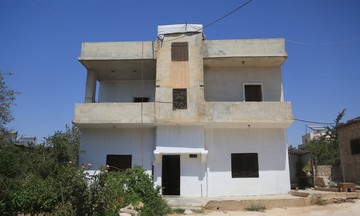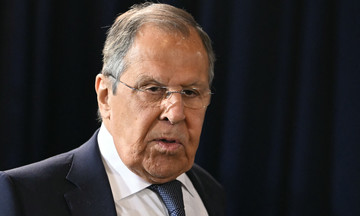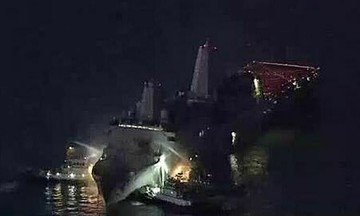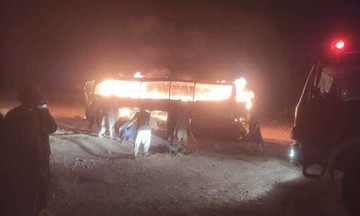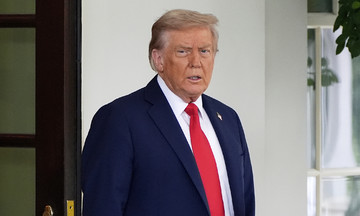On 14/8, President Putin unexpectedly proposed negotiating a new nuclear arms treaty with the US, one day before his summit with President Donald Trump in Alaska.
The war in Ukraine has plunged US-Russia relations into their most adversarial state since the Cold War. Russia possesses the world's largest nuclear arsenal with 4,309 warheads, while the US holds 3,700, according to the Federation of American Scientists (FAS).
The New START treaty, signed in 2010 and extended in 2021, is the "last thread" preventing a nuclear arms race between the two superpowers. The treaty limits each side to 1,550 strategic warheads and 700 long-range missiles or bombers. In 2023, Russia announced its suspension of participation but continues to adhere to the warhead limits. The treaty is set to expire on 5/2/2026.
 |
A Russian Iskander-K cruise missile launches in 2022. Photo: Russian Ministry of Defense |
A Russian Iskander-K cruise missile launches in 2022. Photo: Russian Ministry of Defense
President Putin's call may be intended to reduce pressure from Trump, who is pushing for a ceasefire in Ukraine. The US president has repeatedly warned of "serious consequences" if Russia does not cooperate, while Putin has firmly rejected Kyiv's demands for an immediate ceasefire, emphasizing that Ukraine is part of broader security concerns.
According to Reuters expert Mark Trevelyan, the new nuclear treaty proposal allows Putin to portray himself as a leader responsible for global peace, thereby diverting attention from the pressure regarding Ukraine. This move could help Putin avoid new US sanctions, particularly on oil exports—Russia's main source of revenue—by demonstrating a willingness to cooperate.
Nuclear advantage is central to Russia's strategy. With its superior nuclear arsenal, Russia can negotiate on equal footing with the US, despite facing economic and conventional military (non-nuclear forces) weaknesses.
Sahil Shah, an expert from the European Leadership Network (ELN), and Dmitry Stefanovich from the Primakov National Research Institute of World Economy and International Relations in Moscow, believe that mentioning nuclear weapons serves as Putin's reminder of Russia's global power and influence.
Russia revised its nuclear doctrine in November 2024, allowing for the use of nuclear weapons in response to attacks from non-nuclear states supported by a nuclear power. Putin's proposal appears to be a way to both deter and open a path for dialogue.
This also sends a strong message to the domestic audience, where Putin reinforces his image as a decisive leader facing economic challenges from sanctions.
 |
An assembly line for self-propelled artillery in Ekaterinburg, Russia. Photo: Russian Ministry of Defense |
An assembly line for self-propelled artillery in Ekaterinburg, Russia. Photo: Russian Ministry of Defense
The impending expiration of the New START treaty in February 2026 is a key factor driving Putin's announcement, according to the Independent. If not extended or replaced, both Russia and the US could exceed current limits, leading to a dangerous arms race.
Pavel Podvig, director of the Russian Nuclear Forces Project, warns that the absence of a control treaty would increase strategic instability, forcing both sides to prepare for worst-case scenarios.
Experts believe that President Putin, fully aware of this issue, wants to leverage this moment to shape a new agreement "beneficial to Russia," such as including terms limiting US missile defense systems—a matter Moscow has long viewed as a threat.
However, analyst Podvig emphasizes that any new treaty needs to address tactical nuclear weapons (small-yield warheads), which are not covered by New START, to ensure true balance.
 |
President Putin at a meeting in Moscow on 12/8. Photo: AFP |
President Putin at a meeting in Moscow on 12/8. Photo: AFP
Putin's proposal also reflects an attempt to de-escalate rising nuclear tensions. Recently, President Trump ordered two nuclear submarines closer to Russia in response to a statement from Deputy Chairman of the Russian Security Council Dmitry Medvedev.
Additionally, the US plan to deploy SM-6, Tomahawk, and hypersonic missiles in Germany from 2026 worries Russia, prompting Moscow's recent announcement of lifting self-imposed limits on intermediate-range missile (INF) deployment.
According to Global News, President Putin's praise of his counterpart Trump's efforts in resolving the conflict in Ukraine and his suggestion of a new nuclear treaty could pave the way for better bilateral relations, including economic cooperation.
William Alberque from the Stimson Center believes that despite the hawkish tone of Russia's new nuclear doctrine, Putin's proposal signals a desire to maintain a degree of strategic stability with the US.
However, analysts on Politico suggest that negotiating a replacement for New START could take years, given the complex history of US-Russia negotiations. Russia's refusal of US inspections under the New START framework since 2023 also raises doubts about Moscow's sincerity.
Phong Lam (According to Reuters, Global News, Independent)






